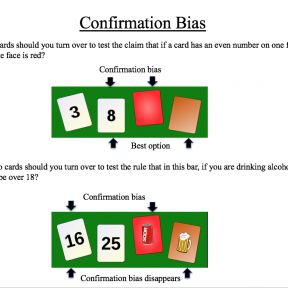
Frequency Illusion
The frequency illusion, also called the Baader-Meinhof phenomenon, is a cognitive bias in which someone learns a novel word or concept—and then “suddenly” encounters it everywhere, whereas in fact it it is just more salient because it has been recently observed.

When we learn a new word, discover a favorite car, or unearth a previously unknown historical fact, and then come across it multiple times in short succession, the frequency illusion is at work.
This cognitive bias leverages the brain’s penchant for pattern recognition: We direct selective attention to our novel discovery and scan the world for matches. We choose what to focus on and confirm more sightings of it—involving another cognitive bias, the confirmation bias, as well.
The term “Baader-Meinhof phenomenon,” was coined independently to denote the frequency illusion. A man named Terry Mullen encountered the term "Baader-Meinhof gang" twice in 24 hours and took public note of this fact. The Baader-Meinhof gang, more formally known as the Red Army Faction, was a far-left terrorist organization active in West Germany in the 1970s. Its founders included Andreas Baader and Ulrike Meinhof. Mullen wrote to a Minnesota newspaper in 1994 after having himself referenced the group, only to see them cited in print the following day. Mullen found this striking because the guerilla group had not been in the U.S. news for years.
The recency illusion also involves selective attention but the effects pertain to when something originated; when we notice something new, we often believe it originated recently. That’s the recency bias. The frequency bias, on the other hand, stipulates that when we notice something new, we believe it occurs more frequently than it does. Still, the two biases can be intertwined and occur together.

The frequency illusion hinges on focus: Whatever you focus on, you’ll find. If you focus on problems, you’ll probably find more problems. If you focus on solutions, you’ll probably find more solutions. This occurs because the frequency illusion is a combination of selective attention and confirmation bias.
We remember what we prime the mind to attend to. If we select a new concept, we’ll identify that concept more often; the minds will actively seek out more stimuli related to that concept to seek confirmation.
Priming the mind for a specific topic makes it more likely we find things related to that specific topic as we go about our lives. But we’re not actually coming across more material related to the topic, we're just extra attuned to relevant subject matter.
The frequency illusion doesn’t generally have negative consequences in an individual’s personal life, other than being a fun and fascinating concept. In the professional domain, however, cognitive biases like the frequency illusion can impact decision-making. For example, if a psychiatrist learns about a new diagnosis, they may pay more attention to it and jump to diagnose it more frequently, which would influence care and treatment. Similar scenarios can pay out in research, marketing, and the criminal justice system, among other domains.
The frequency illusion can be misconstrued by people with severe mental illnesses, such as schizophrenia. Schizophrenia involves experiencing hallucinations and/or delusions. If someone who suffers from schizophrenia were to believe that an external sign or signal was being sent repeatedly (as opposed to recognizing the role of coincidence and/or the frequency illusion), their paranoid or delusional beliefs could be reinforced.








